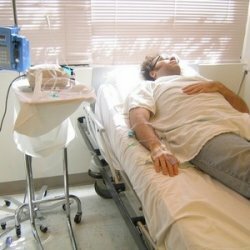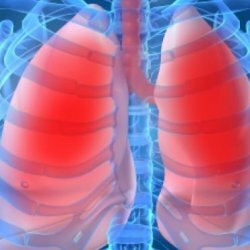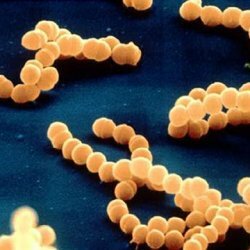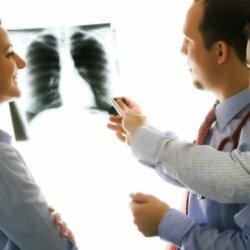Pneumonia in conditions of immunodeficiency. Pathogens and clinical course
 Pneumonia refers to inflammatory diseases of the lungs and in most clinical cases it proceeds benignly. The immune system has a counteracting effect of the infection, eliminating it from the body within a week. But in individuals with immunodeficiency states, the duration of the disease and its severity are much higher, which forces us to use a different tactic of treatment and prevention. It consists in the use of several antibiotics from among the drugs of the reserve. Also, patients need detoxification and maintenance therapy, which can be adequately performed only in the intensive care unit.
Pneumonia refers to inflammatory diseases of the lungs and in most clinical cases it proceeds benignly. The immune system has a counteracting effect of the infection, eliminating it from the body within a week. But in individuals with immunodeficiency states, the duration of the disease and its severity are much higher, which forces us to use a different tactic of treatment and prevention. It consists in the use of several antibiotics from among the drugs of the reserve. Also, patients need detoxification and maintenance therapy, which can be adequately performed only in the intensive care unit.
Characteristics of types of immunodeficiency pneumonia
In the vast majority of immunodeficiency pneumonia are infectious and stagnant in individuals with heart failure. Such patients do not have allergic pneumonia, which confirms the insufficiency of the humoral and cellular link of immunity. Therefore, as the main causes remain bacterial, viral and fungal inflammation.
Bacterial pneumonia is caused by a number of saprophytic bacteria that directly damage the lung tissue. A similar mechanism is characteristic for bacterial pathogens and for viruses. The latter destroy the lung tissue as a result of its multiplication, and the former - due to the decomposition of the walls of the alveoli by enzymes.
The most common bacterial pneumonia is caused by staphylococci, hemophilic, intestinal and Pseudomonas aeruginosa, streptococci, chlamydia, Klebsiella and proteus. These bacteria cause a severe and prolonged course of pneumonia, which requires the use of different drugs and medical treatment tactics. Among the fungal pathogens of immunodeficiency pneumonia is found candida, pneumocyst, aspergillus. Viral pathogens are represented by influenza, adenovirus, RSV, measles virus.
Traditional division into shared and focal pneumonia persists even in conditions of immunodeficiency. The patient can get infected with any of the above pathogens, which provokes inflammation at a specific tissue focus. Depending on its prevalence, the degree of severity is set. And in persons with insufficient reactivity of immunity, there is almost no mild course of the disease, and every case of the disease should be observed in the intensive care unit.
The course of staphylococcal immunodeficiency pneumonia
The severity of the disease and its timing are determined by the type of pathogen, the tactics of treatment and the degree of inadequate immunity of the body. With staphylococcal infection, the disease begins with a fever ranging from 38-40 degrees. However, in a number of patients, due to severe immunodeficiency, the temperature may rise slightly, or at all, remain at the level of the physiological norm. Because of this, the main symptoms of pneumonia are the following: an initially dry cough with the subsequent discharge of sputum yellowish or green with a purulent unpleasant odor.
The key complication of staphylococcal pneumonia is the tendency to form abscesses. In them, the process is delimited from a healthy lung, but the inflammation continues with the destruction of the tissue of the organ. As the abscess progresses, purulent masses can erupt into the bronchus or into the pleural cavity. In the first case, the patient will notice a significant increase in the amount of green fetid sputum. In the case with the breakthrough of pus in the pleural cavity, the phenomenon of pyopneuromotorax with respiratory insufficiency is observed. And precisely such dangers require hospitalization in the intensive care unit immediately at the time of onset of pneumonia.
Gram-negative and other immunodeficiency pneumonia
This group of pneumonia includes all cases of disease associated with infection with gram-negative bacteria. The disease is most severe in cases of chlamydial and klebsiellosis inflammation. The patient is worried by a high temperature, marked by intoxication with the products of decay of bacteria and own biological tissues, coughing with the departure of murky dark sputum.
With viral pneumonia, the main characteristic of the disease is a cough with mucous sputum. However, subsequently the bacterial component is connected to the lesion process, which causes the main clinical signs. Unlike them, fungal inflammation can remain asymptomatic for a long time. It can be identified only after sowing sputum.
A special type of immunodeficiency pneumonia is tubercular. It occurs in the outcome of a prolonged course of tuberculosis, which provokes immunodeficiency and caseous necrosis. It is extremely difficult to treat such a disease and in a number of cases it is impossible because of multiple drug resistance to drugs. Forecasting treatment in this case is impossible, and pathology is characterized by high mortality.
Therapeutic and Prophylactic Tactics
The basis for the treatment of bacterial pneumonia is the use of antibiotics from the list of a wide spectrum of action. The most commonly used reserve drugs, that is, tienam and meropenem. In addition to them, amoxicillin, digital triac, cefepine, clarithromycin, cefazolin are prescribed depending on the resistance of the bacteria.
Because of the weak reactivity of the immune system immunomodulators are mandatory. The same applies in the case of viral pneumonia due to its frequent bacterial complications. In fungal pneumonia, antibiotics are ineffective. In this connection, griseofulvin and its analogs are used. Also in the practice of treating severe pneumonia, non-pharmacological methods of detoxification are used: plasmapheresis and hemodilution.



